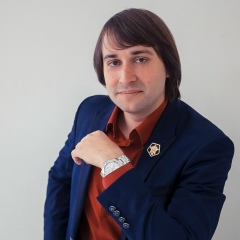Писатель и историк Святослав Логинов утверждает, что разыскал документы о чудесах Иоанна Кронштадтского, от святой воды которого светлели лики на иконах: в свое время будущий святой окончил артиллерийское училище (деталь, тщательно вычеркиваемая из биографий последние 100 лет), где учился у знаменитого русского химика Зинина, освоив получение перекиси водорода — вещество в ту эпоху редкое и малоизученное. Но даже если первым изобретателем осветления икон был не Иоанн Кронштадтский, сам фокус позже оказался довольно распространен и неоднократно изучен: иконы писались с помощью свинцовых белил, но с годами от духоты и атмосферного сероводорода белила превращаются в черный сульфид свинца. Перекись водорода, издалека неотличимая от святой воды, окисляет его до белого сульфата: 4H2O2 + PbS → PbSO4 + 4H2O
Другой известный фокус связан с самовозгоранием свечей. Для этого нужен белый фосфор, который растворяют в бензоле или сероуглероде. Если раствором смазать фитили свечей и лампад, то как только растворитель испарится, белый фосфор воспылает и подожжет фитиль.
Мироточение икон — одно из самых знаменитых чудес. Иногда икона может мироточить сама, выделяя из доски масло, но нередко ей помогают. Одним из первых разоблачителей стал царь Петр Первый. В глазах замироточившей иконы царь заметил крохотные дырочки, а царский статус позволил ему немедленно разломать устройство, обнаружив лунки с маслом на обратной стороне доски. После государева указа «Если Богородица ещё хотя бы раз заплачет лампадным маслом, то зады у попов заплачут кровью» мироточение взяло долгую паузу.
Из нынешних чудес самое регулярное — ежегодное схождение Благодатного огня (самовозгорание свечей) на православную пасху в иерусалимском храме Гроба Господнего. Известно, что огонь всегда появляется во внутреннем помещении при отсутствии посторонних свидетелей с зеркалками и GoPro. А на прямой вопрос, появляется пламя само или его зажигают от лампады в знак праздника, официального ответа церковь не дает — понимай как хочешь. Православные прихожане понимают это как чудо, а завистливые католики критикуют.
Другой известный фокус связан с самовозгоранием свечей. Для этого нужен белый фосфор, который растворяют в бензоле или сероуглероде. Если раствором смазать фитили свечей и лампад, то как только растворитель испарится, белый фосфор воспылает и подожжет фитиль.
Мироточение икон — одно из самых знаменитых чудес. Иногда икона может мироточить сама, выделяя из доски масло, но нередко ей помогают. Одним из первых разоблачителей стал царь Петр Первый. В глазах замироточившей иконы царь заметил крохотные дырочки, а царский статус позволил ему немедленно разломать устройство, обнаружив лунки с маслом на обратной стороне доски. После государева указа «Если Богородица ещё хотя бы раз заплачет лампадным маслом, то зады у попов заплачут кровью» мироточение взяло долгую паузу.
Из нынешних чудес самое регулярное — ежегодное схождение Благодатного огня (самовозгорание свечей) на православную пасху в иерусалимском храме Гроба Господнего. Известно, что огонь всегда появляется во внутреннем помещении при отсутствии посторонних свидетелей с зеркалками и GoPro. А на прямой вопрос, появляется пламя само или его зажигают от лампады в знак праздника, официального ответа церковь не дает — понимай как хочешь. Православные прихожане понимают это как чудо, а завистливые католики критикуют.
The writer and historian Svyatoslav Loginov claims that he sought out documents about the miracles of John of Kronstadt, from whose holy water the faces on the icons brightened: at one time, the future saint graduated from the artillery school (a detail carefully deleted from biographies of the last 100 years), where he studied with the famous Russian chemist Zinina, having mastered the production of hydrogen peroxide, was a rare and little studied substance in that era. But even if the first inventor of the clarification of icons was not John of Kronstadt, the trick itself later turned out to be quite widespread and repeatedly studied: the icons were painted using lead white, but over the years, from the stuffiness and atmospheric hydrogen sulfide, white turned into black lead sulfide. Hydrogen peroxide, from afar indistinguishable from holy water, oxidizes it to white sulfate: 4H2O2 + PbS → PbSO4 + 4H2O
Another well-known trick is associated with spontaneous combustion of candles. For this, white phosphorus is needed, which is dissolved in benzene or carbon disulfide. If you grease the wicks of candles and lamps with a solution, then as soon as the solvent evaporates, white phosphorus ignites and sets the wick on fire.
The myrrh-streaming of icons is one of the most famous miracles. Sometimes the icon can be myrrh-streaming by itself, isolating oil from the board, but it is often helped. One of the first whistleblowers was Tsar Peter the Great. In the eyes of the soothed icon, the king noticed tiny holes, and the royal status allowed him to immediately break the device, finding holes with oil on the back of the board. After the sovereign’s decree “If the Mother of God will at least once cry with oil of oil, then the backsides of the priests will pay with blood” the myrrh flow took a long pause.
Of the current miracles, the most regular is the annual gathering of the Holy Fire (spontaneous combustion of candles) for Orthodox Easter in the Jerusalem Church of the Holy Sepulcher. It is known that fire always appears in the interior when there are no extraneous witnesses with mirrors and GoPro. And to the direct question, the flame appears on its own or is lit from a lamp as a sign of celebration, the church does not give an official answer - understand how you want. Orthodox parishioners understand this as a miracle, and envious Catholics criticize.
Another well-known trick is associated with spontaneous combustion of candles. For this, white phosphorus is needed, which is dissolved in benzene or carbon disulfide. If you grease the wicks of candles and lamps with a solution, then as soon as the solvent evaporates, white phosphorus ignites and sets the wick on fire.
The myrrh-streaming of icons is one of the most famous miracles. Sometimes the icon can be myrrh-streaming by itself, isolating oil from the board, but it is often helped. One of the first whistleblowers was Tsar Peter the Great. In the eyes of the soothed icon, the king noticed tiny holes, and the royal status allowed him to immediately break the device, finding holes with oil on the back of the board. After the sovereign’s decree “If the Mother of God will at least once cry with oil of oil, then the backsides of the priests will pay with blood” the myrrh flow took a long pause.
Of the current miracles, the most regular is the annual gathering of the Holy Fire (spontaneous combustion of candles) for Orthodox Easter in the Jerusalem Church of the Holy Sepulcher. It is known that fire always appears in the interior when there are no extraneous witnesses with mirrors and GoPro. And to the direct question, the flame appears on its own or is lit from a lamp as a sign of celebration, the church does not give an official answer - understand how you want. Orthodox parishioners understand this as a miracle, and envious Catholics criticize.
У записи 1 лайков,
0 репостов.
0 репостов.
Эту запись оставил(а) на своей стене Костя Минин






















